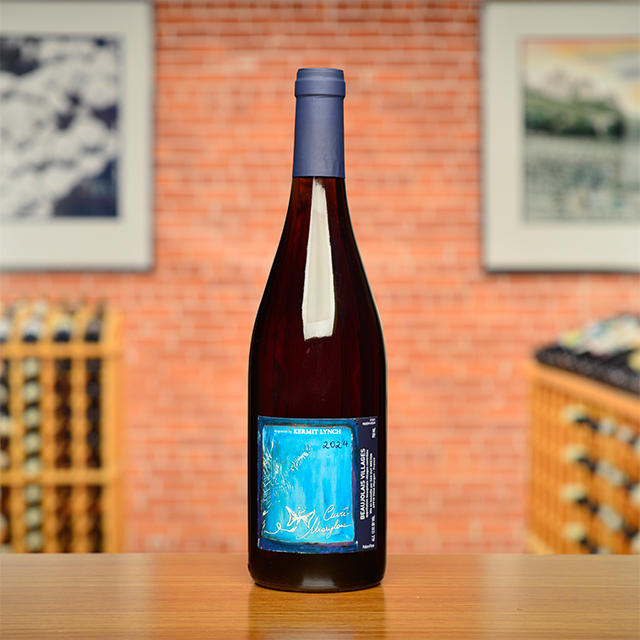Notify me
2020 Morgon “Les Charmes”
Quentin Harel
Deliciously earthy nose, like fresh-turned garden soil, that extends through the finish. Harel’s Charmes has tannic grip, but those tannins melt away when paired with a meal. The wine’s plainspoken, humble, rustic quality is immensely appealing and refreshing.
—Dustin Soiseth
| Wine Type: | red |
| Vintage: | 2020 |
| Bottle Size: | 750mL |
| Blend: | Gamay |
| Appellation: | Morgon |
| Country: | France |
| Region: | Beaujolais |
| Producer: | Quentin Harel |
| Vineyard: | .8 ha — 80 years, .3 ha — 3 years (1.1 ha total) |
| Soil: | Schist, Granite, Manganese |
| Aging: | Aged 6 months in 400L demi-muid |
| Farming: | Organic (certified) |
| Alcohol: | 12.5% |
More from this Producer or Region

2025 Beaujolais Nouveau
France | Beaujolais
Limited Quantities! ~ Valentin Montanet’s rendition has guts, but it sure is kickin’, too, with loads of cherries and heaps of joy.

2022 Côte de Brouilly
France | Beaujolais
A relatively new addition to Guy Breton’s Beaujolais lineup, this exuberant Côte de Brouilly is flat-out delicious.

2024 Beaujolais Blanc
France | Beaujolais
Do not miss this outstanding, value-driven Chardonnay from one of our most beloved French domaines.

2024 Régnié “Grain & Granit”
France | Beaujolais
Here is a rich, bold Régnié, saturated with luscious fruit and earthy spice.

2021 Côte de Brouilly
France | Beaujolais
Alex Foillard fashions a Côte-de-Brouilly that strikes a deeper register, saturating the senses with tooth-staining fruit.

2024 Beaujolais-Villages
France | Beaujolais
December Club Gourmand ~ This drinks like a Gamay infusion with lovely hints of potpourri, spice, and fresh grapes.

2024 Côte de Brouilly
France | Beaujolais
Brambly and mineral, this bottling exudes both the convivial charm of Gamay and the crunchy intensity of the Côte de Brouilly.

2024 Chiroubles “Cuvée Léa”
France | Beaujolais
Floral and succulent, bursting with notes of little red berries, but it is also delicate and light on its feet.

2023 Fleurie
France | Beaujolais
Light and living, charged with herbs, cranberry, and strawberry.

2024 Beaujolais-Villages “Cuvée Marylou”
France | Beaujolais
Easy on the eyes (just look at that vibrant color!), easy on the head, easy enough on the wallet.
About The Producer
Quentin Harel
About The Region
Beaujolais

After years of the region’s reputation being co-opted by mass-produced Beaujolais Nouveau and the prevalence of industrial farming, the fortunes of vignerons from the Beaujolais have been on the rise in the past couple of decades. Much of this change is due to Jules Chauvet, a prominent Beaujolais producer who Kermit worked with in the 1980s and arguably the father of the natural wine movement, who advocated not using herbicides or pesticides in vineyards, not chaptalizing, fermenting with ambient yeasts, and vinifying without SO2. Chief among Chauvet’s followers was Marcel Lapierre and his three friends, Jean Foillard, Guy Breton, and Jean-Paul Thévenet—a group of Morgon producers who Kermit dubbed “the Gang of Four.” The espousal of Chauvet’s methods led to a dramatic change in quality of wines from Beaujolais and with that an increased interest and appreciation for the AOC crus, Villages, and regular Beaujolais bottlings.
The crus of Beaujolais are interpreted through the Gamay grape and each illuminate the variety of great terroirs available in the region. Distinguishing itself from the clay and limestone of Burgundy, Beaujolais soils are predominantly decomposed granite, with pockets of blue volcanic rock. The primary vinification method is carbonic maceration, where grapes are not crushed, but instead whole clusters are placed in a tank, thus allowing fermentation to take place inside each grape berry.
Much like the easy-going and friendly nature of many Beaujolais vignerons, the wines too have a lively and easy-drinking spirit. They are versatile at table but make particularly good matches with the local pork sausages and charcuterie. Though often considered a wine that must be drunk young, many of the top crus offer great aging potential.
More from Beaujolais or France
2023 Moulin-à-Vent “Sous la Roche”
Domaine Thillardon France | Beaujolais
2022 Régnié
Guy Breton France | Beaujolais
2021 Brouilly
Alex Foillard France | Beaujolais
2024 Beaujolais-Villages “Cuvée Marylou”
Guy Breton France | Beaujolais
2024 Beaujolais Blanc
Domaine Dupeuble France | Beaujolais
2024 Côte-de-Brouilly
Nicole Chanrion France | Beaujolais
2024 Fleurie “Les Moriers”
Domaine Chignard France | Beaujolais
2024 Côte de Brouilly
Château Thivin France | Beaujolais
2024 Morgon “La Roche Pilée”
Jean-Paul et Charly Thévenet France | Beaujolais
2024 Moulin-à-Vent “Vieilles Vignes”
Bernard Diochon France | Beaujolais
2024 Beaujolais-Villages
Alex Foillard France | Beaujolais
2023 Chénas “Chassignol”
Domaine Thillardon France | Beaujolais
2023 Moulin-à-Vent “Sous la Roche”
Domaine Thillardon France | Beaujolais
2022 Régnié
Guy Breton France | Beaujolais
2021 Brouilly
Alex Foillard France | Beaujolais
2024 Beaujolais-Villages “Cuvée Marylou”
Guy Breton France | Beaujolais
2024 Beaujolais Blanc
Domaine Dupeuble France | Beaujolais
2024 Côte-de-Brouilly
Nicole Chanrion France | Beaujolais
2024 Fleurie “Les Moriers”
Domaine Chignard France | Beaujolais
2024 Côte de Brouilly
Château Thivin France | Beaujolais
2024 Morgon “La Roche Pilée”
Jean-Paul et Charly Thévenet France | Beaujolais
2024 Moulin-à-Vent “Vieilles Vignes”
Bernard Diochon France | Beaujolais
2024 Beaujolais-Villages
Alex Foillard France | Beaujolais
2023 Chénas “Chassignol”
Domaine Thillardon France | Beaujolais
Kermit once said...

Kermit once said...
For the wines that I buy I insist that the winemaker leave them whole, intact. I go into the cellars now and select specific barrels or cuvées, and I request that they be bottled without stripping them with filters or other devices. This means that many of our wines will arrive with a smudge of sediment and will throw a more important deposit as time goes by, It also means the wine will taste better.


















